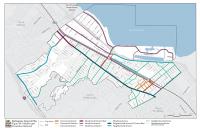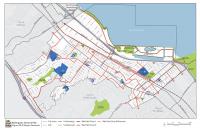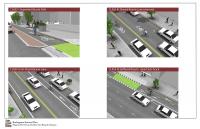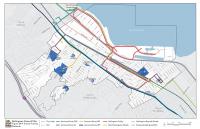Transportation Demand Management
Managing travel demand became popular in the 1970s as a means to encourage people to consume less oil during the energy crisis. Today, it is more closely associated with goals to reduce air pollutants, reduce congestion from single-driver vehicle trips, and encourage more sustainable travel practices. For years, transportation and land use decisions around the country supported single-occupancy vehicle use through on-site parking requirements, tax incentives, and commute reimbursement programs.
Transportation Demand Management (TDM) is a set of strategies used to mitigate traffic congestion, provide more options to get around, and reduce dependence on single-occupancy vehicles. Often these strategies are explicitly designed to improve community health and the environment. TDM strategies aim to reverse historical trends and expand choices for commutes and local trips, while also reducing the total number of vehicle miles traveled (VMT) in the community. The following goal and policies identify the City’s TDM strategies that will be incorporated into new projects and public improvement projects.
Goal: M-5
Implement TDM strategies that reduce overall vehicle trips and encourage the use of transportation modes that reduce VMT and greenhouse gas emissions.



